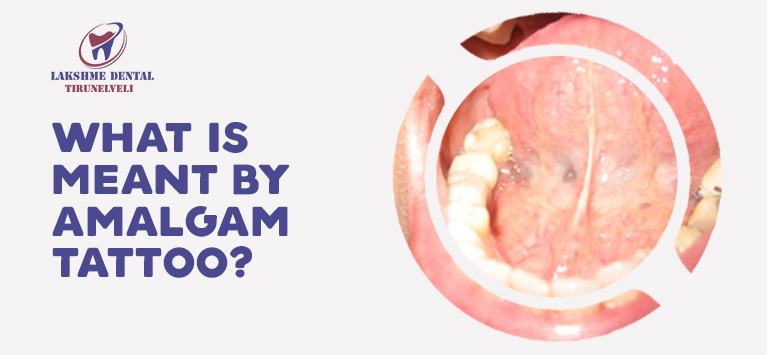
Why do you have black spots in the mouth after getting dental fillings?
Amalgam tattoo is defined as the amalgam pigmentation of the oral mucosa and it appears as blue, grey, or black spots. In general, such strange colored lesions in the mouth occurs with a variety of reasons that mimic amalgam tattoos. However, the amalgam pigmentations differ from them as they are not elevated and do not have any texture.
Amalgam fillings are made up of metals including mercury, copper, silver, and tin. When a tiny particle of those silver fillings traps underneath the oral tissues, a dark-colored lesion occurs.
People who had amalgam fillings or treated their tooth root with apicoectomy surgery will develop amalgam tattoos.
How do amalgam tattoos form?
The amalgam pigmentation has 3 possible causes as follows:
- Accidental deposit during placement – While placing an amalgam filling, a small particle of the filling may peel and stuck over the gums near the treated tooth.
- Accidental deposit during polishing – Once the filling is placed to restore a tooth, dentists have to polish it to keep the bites even. At that time, a tiny particle of the silver filling may peel off from the tooth and trap in the soft tissues of your mouth.
- Accidental deposit during removal – Dental doctors use high-speed turbine dental drills to remove silver fillings. The removed filling materials fly around the mouth while drilling and seep into the oral tissues.
In essence, dark-colored lesion occurs as a side effect of silver fillings. When the amalgam filling particles lodged in the oral tissues for a while, they start leaking silver into the tissue followed by causing metallic pigmentation.
How do dentists diagnose amalgam tattoos?
In general, amalgam tattoos occur anywhere inside your mouth. The oral tissues near a silver amalgam restoration tooth are prone to this strange pigmentation so that dental doctors identify this easily in those regions.
Sometimes, doctors use dental x-rays to detect the presence of metals. Using radiographs allows the dentists to determine whether the pigmentations occur due to amalgam fillings or diseases.
Can a dentist remove amalgam tattoos?
Yes. You can get rid of the discolored oral spots with the help of your dentist. At times, the dark-colored lesion subsides on its own. We extract the oral mucosa tattoos using the following solutions:
- Surgical removal – Most of the amalgam tattoos are removed using surgical excision. When a dentist found the pigmentation occurs due to metal fillings, they apply a numbing gel over the discolored site, make an incision over there and remove the discolored tissues using a surgical knife.
- Laser treatment – Laser dentistry is also helpful in treating discolored tissues and extracting them carefully.
Remember that the oral mucosa tattoos would occur even though you removed the amalgam fillings years ago. Likewise, dentists remove the existing amalgam fillings and restore them with composite fillings after amalgam tattoo removal treatment to prevent this solid-colored lesion in the future.
Bottom line
Except the aesthetic issue, amalgam tattoos are harmless even though they contain mercury. Various diseases, mucosal melanoma, drug-induced hyperpigmentation, mucosal melanoma cause discolored spots in the oral tissues so that identifying the root cause of this cosmetic issue is tedious at times.
Do you notice any dark-colored pigmentations in your mouth after getting dental restorations? If yes, it may be amalgam tattoos else you might have any oral or bodily disorders. Consult your dentist immediately.










